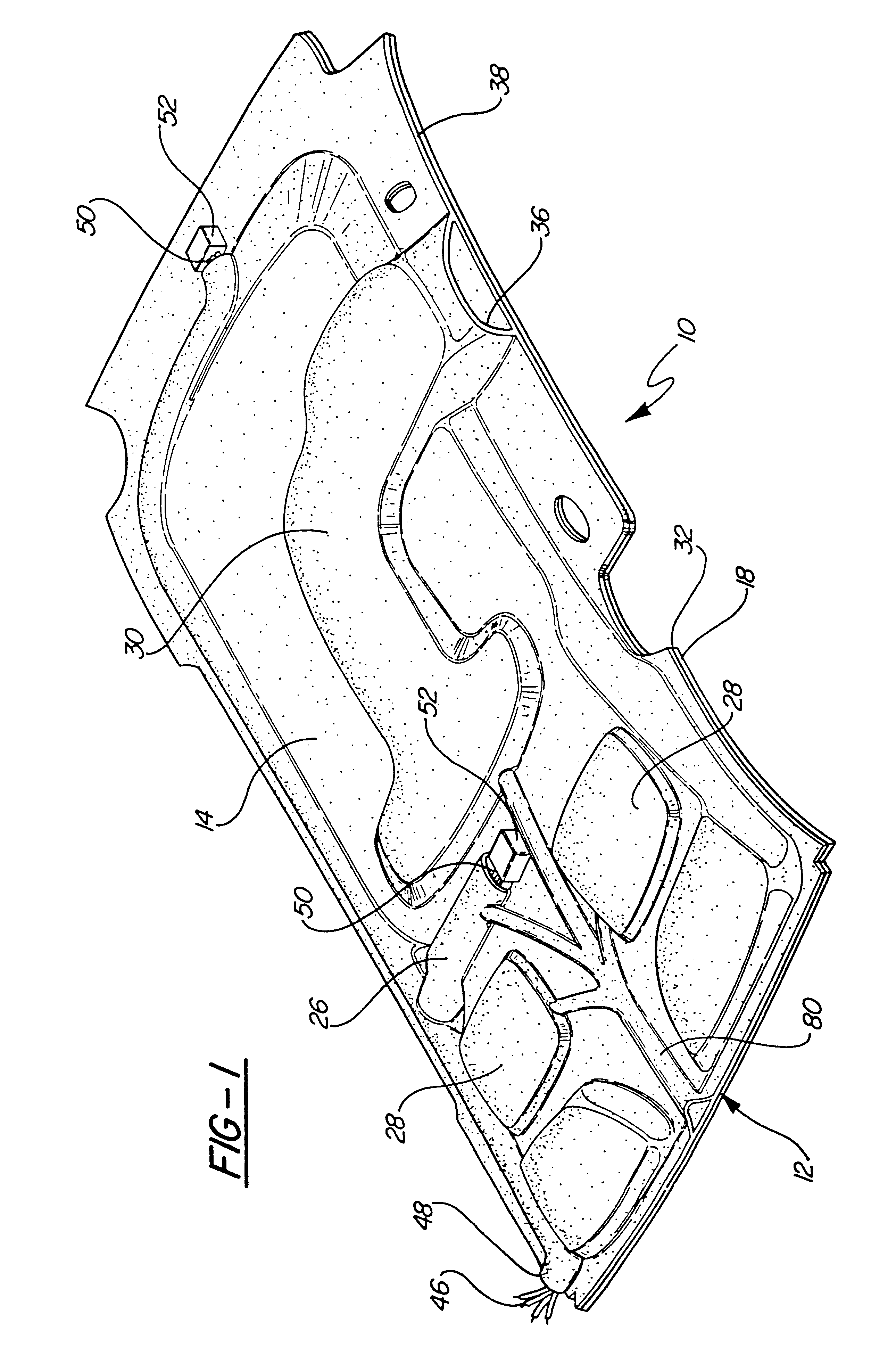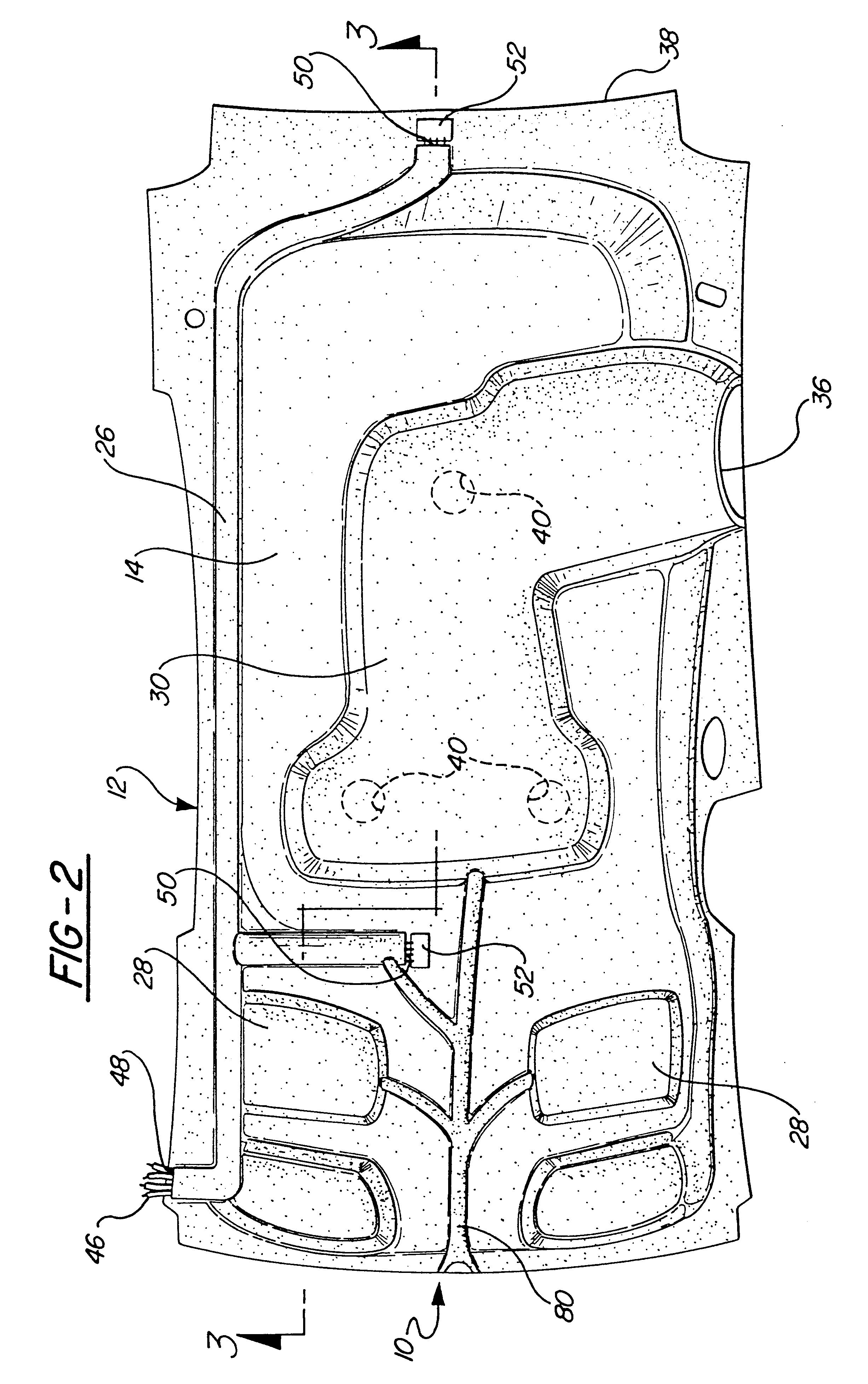Blow molded headliner
a blow molding and headliner technology, applied in the direction of pedestrian/occupant safety arrangements, vehicular safety arrangements, other domestic objects, etc., to achieve the effect of reducing noise levels and improving the ability of the cavity to absorb the impact force of the passenger head
- Summary
- Abstract
- Description
- Claims
- Application Information
AI Technical Summary
Benefits of technology
Problems solved by technology
Method used
Image
Examples
Embodiment Construction
A headliner assembly for lining the roof of the passenger compartment of a vehicle is generally shown at 10 in FIGS. 1-3. The headliner assembly 10 includes a unitary substrate, generally indicated at 12 in FIGS. 1-3, that is configured to mount to a vehicle in a position generally covering a lower surface of a passenger compartment roof (not shown). The substrate 12 includes an upper substrate surface shown at 14 in FIGS. 1-3 and a lower substrate surface shown at 16 in FIG. 3. The lower substrate surface 16 is disposed opposite the upper substrate surface 14. The substrate 12 may be made of any suitable moldable material to include various plastics or fiberglass reinforced polyester resin.
A decorative cover, shown at 18 in FIG. 3, is supported on the lower substrate surface 16. The decorative cover 18 may be in the form of a fabric or solid layer of any suitable material.
Cavities, shown at 20, 22 and 24 in FIG. 3 are formed into the substrate 12 between the upper substrate surface...
PUM
| Property | Measurement | Unit |
|---|---|---|
| sound absorption | aaaaa | aaaaa |
| energy absorption | aaaaa | aaaaa |
| soft | aaaaa | aaaaa |
Abstract
Description
Claims
Application Information
 Login to View More
Login to View More - R&D
- Intellectual Property
- Life Sciences
- Materials
- Tech Scout
- Unparalleled Data Quality
- Higher Quality Content
- 60% Fewer Hallucinations
Browse by: Latest US Patents, China's latest patents, Technical Efficacy Thesaurus, Application Domain, Technology Topic, Popular Technical Reports.
© 2025 PatSnap. All rights reserved.Legal|Privacy policy|Modern Slavery Act Transparency Statement|Sitemap|About US| Contact US: help@patsnap.com



